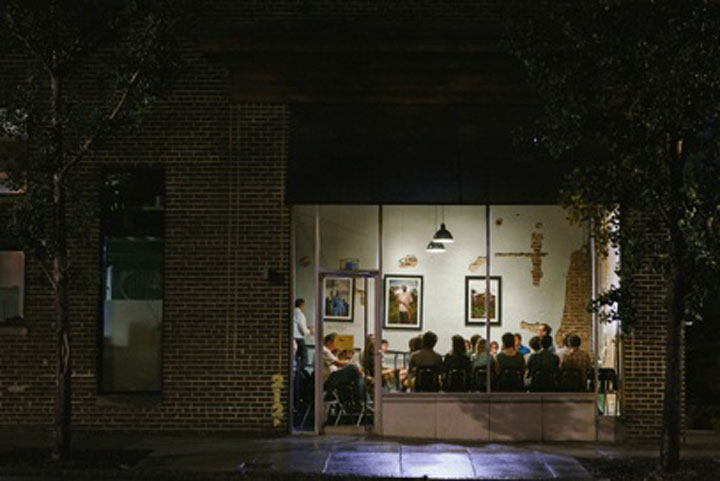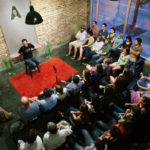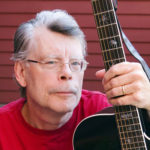
Photo: Arc Light Stories
I’ve followed a format for public speaking for many years: introduction, main point, main point, main point, conclusion.
It has served me well. Except for storytelling.
I needed to step out of my comfort zone and work on my storytelling skills. While I’ve become better at incorporating personal stories within my talks, I wanted to work on pure storytelling.
Doing it onstage this week was a good first step.
I was a storyteller at the Arc Light Stories event on Saturday. I told a 10-minute story about a big influence on my life, my father.
I had my doubts when I signed up. Could I put together an entertaining story from my life? Would it have a point? Did it need to have a point? Would I be able to deliver in such an untested area for me?
Having Arc Light’s cheat sheet helped tremendously. As did thinking about my previous posts on story structure and characters.
I wrote out five bullet points on a blank document and practiced over and over to get the story down to 10 minutes. Arc Light organizer Taylor Robinson held a rehearsal a few days ahead of the event, which allowed us to try out our tales on our fellow performers.
For me, this was very helpful. Usually, I practice alone. But practicing in front of another person gives valuable feedback on timing, clarity and structure. Taylor gives good advice to beginners on their stories. He starts by emphasizing what he likes in the content and the delivery. Then, he offers suggestions on what to add, what to cut or how to play up important moments.
One of my major concerns was that my story was not straightforward, what Taylor calls a “montage story.” (As opposed to a standard story with a beginning, a middle and an end.) Fortunately, they’re allowed, and one other storyteller was also using the montage approach.
Another concern was how the audience would react at certain points in my story. I used dark humor to ease the narrative along, but I’m not always sure if strangers will laugh, chuckle uncomfortably or stare in disbelief.
And my final concern was an ongoing one: How much should I share from my personal life? I’ve always been a private person, but I’ve used my personal blog to develop as a better writer.
I practiced sparingly over the next 10 days. At the event, I tweaked the last line in my head and went with the revised version.
I was second-to-last in the lineup, which gave me the opportunity to listen and watch carefully to some wonderful storytellers. Boy, I did not want to follow them, but alas …
Telling my story about being a driven person allowed me to stretch as a speaker and a performer. Hearing the audience laugh was a pleasant surprise. Veteran storyteller Jamie Golden told me afterward that laughing gives listeners a chance to release tension during a dramatic story.
And I worked on the most basic of storytelling structures: This happened, and this is how I felt; then this happened, and this is how I felt. I made sure to include myself and my reactions throughout the piece.
In your storytelling, you will need to incorporate genuine emotion. You’ll need feedback from trusted colleagues to improve the weak spots.
And you’ll need to go out on a limb and start your story, lest no one ever hear it.
•
See more posts in our “Storytelling in-depth” series.
•
Learn more storytelling secrets
in the free weekly Y’all Connect newsletter …







